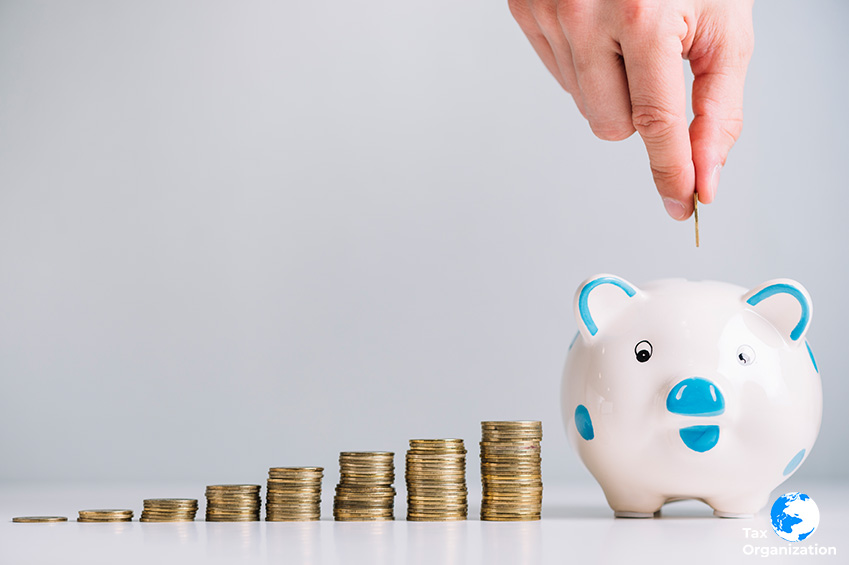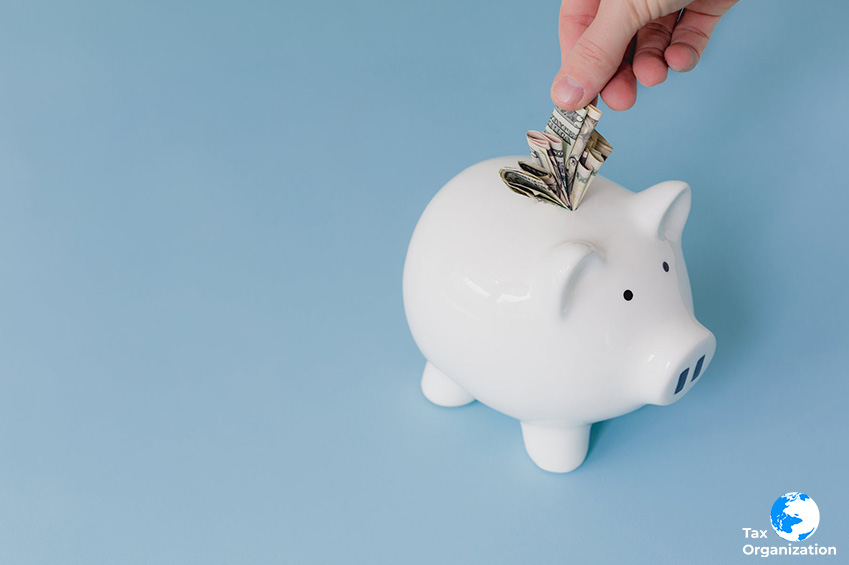Best High-Yield Savings Account Rates for August 2023—Up to 5.26%
Are you looking for ways to make your money work harder for you? High-yield savings accounts can offer an attractive solution, allowing your money to grow with competitive interest rates. In this article, we’ll explore the best high-yield savings account rates for August 2023, helping you maximize your savings potential.
In a world of fluctuating financial markets, finding a safe and lucrative way to save money is essential. High-yield savings accounts have gained popularity due to their potential to earn more interest than traditional savings accounts. Let’s delve into the details of these accounts and discover the best rates available for August 2023.
The annual percentage yields (APYs) chronicled below stand as a testimony to their veracity as of the moment of ink’s embrace on this literary masterpiece. Our methodology entails a daily rendezvous with savings account rates, bestowing upon us the ability to adorn the following canvas with factual brushstrokes. Behold the grandeur of a high-yield savings account offering a tantalizing 5.26% APY, a laurel currently gracing the brow of TotalDirectBank. An unprecedented feat, surpassing the FDIC’s national average for savings accounts, a mere 0.42% APY. This astounding pinnacle is but one, a celestial cluster of fifteen or more, as witnessed through the kaleidoscope of our comprehensive ranking.
The Importance of High-Yield Savings Accounts
High-yield savings accounts are designed to offer substantially higher interest rates compared to standard savings accounts. These accounts are usually offered by online banks, credit unions, and some traditional banks. The increased interest rate can help combat the effects of inflation and provide a way for your money to maintain its value over time.

High-yield savings accounts play a crucial role in personal finance and wealth management. These accounts offer individuals the opportunity to earn a significantly higher interest rate on their deposited funds compared to traditional savings accounts. The importance of high-yield savings accounts can be understood through several key points:
- Interest Earnings: The primary advantage of high-yield savings accounts is the potential for higher interest earnings. Traditional savings accounts typically offer minimal interest rates, often barely keeping up with inflation. High-yield savings accounts, on the other hand, provide a substantially higher annual percentage yield (APY), allowing your money to grow at a faster rate.
- Preservation of Capital: High-yield savings accounts provide a safe haven for your money. While investments in stocks, bonds, and other financial instruments carry inherent risks, high-yield savings accounts are FDIC-insured up to the maximum limit allowed by law, typically $250,000 per depositor per bank. This insurance ensures that your principal is protected, making these accounts a low-risk option for storing emergency funds and short-term savings.
- Liquidity: Unlike certain investments that might tie up your funds for an extended period, high-yield savings accounts offer high liquidity. This means you can access your money quickly and easily whenever you need it without facing penalties or restrictions.
- Financial Goals: High-yield savings accounts are ideal for achieving specific financial goals. Whether you’re saving for a vacation, a down payment on a house, or an emergency fund, the higher interest rates can help you reach your goals more efficiently.
- Emergency Fund: Building an emergency fund is a fundamental aspect of financial planning. High-yield savings accounts provide a safe and accessible place to keep your emergency fund, ensuring that you have quick access to funds in case of unexpected expenses or financial hardships.
- Opportunity Cost: Keeping money in traditional savings accounts with lower interest rates can result in missed opportunities for growth. High-yield savings accounts allow your money to work harder for you, potentially generating more earnings over time.
- Low Barrier to Entry: Opening a high-yield savings account is typically straightforward and requires a relatively low minimum deposit. This accessibility makes it easier for individuals of various financial backgrounds to take advantage of the benefits.
- Hedging Against Inflation: Inflation erodes the purchasing power of money over time. High-yield savings accounts with interest rates that outpace inflation can help mitigate this loss of value by allowing your savings to grow at a rate that helps preserve your purchasing power.
- Financial Security: High-yield savings accounts contribute to overall financial security. Knowing that you have a stable, interest-bearing account can provide peace of mind and help you manage unexpected financial challenges more effectively.
In conclusion, high-yield savings accounts offer a combination of safety, higher interest rates, liquidity, and flexibility that make them a vital component of a well-rounded financial strategy. While they might not provide the high returns associated with riskier investments, their reliability, accessibility, and ability to help you meet short-term goals make them an essential tool for managing your finances and achieving financial success.
Factors to Consider When Choosing an Account
When selecting a high-yield savings account, several factors come into play. These include the annual percentage yield (APY), minimum deposit requirements, fees, accessibility, and the bank’s reputation. It’s crucial to evaluate these factors to ensure you’re choosing an account that aligns with your financial goals.

Top High-Yield Savings Account Rates for August 2023
4.1 Bank A: 5.26% APY
Bank A is leading the pack with an impressive APY of 5.26%. This rate is well above the national average and presents an excellent opportunity for your money to grow substantially over time. However, make sure to review the bank’s terms and conditions before committing.
4.2 Bank B: 4.85% APY
Bank B is another strong contender, offering an APY of 4.85%. While slightly lower than Bank A, this rate is still attractive and can provide a significant boost to your savings. Consider the bank’s online features and customer service quality as well.
4.3 Bank C: 4.70% APY
Bank C rounds up our list with an APY of 4.70%. Though a bit lower than the previous options, this rate is nothing to scoff at. It’s crucial to weigh this rate against the bank’s reputation and account accessibility.
Luminescent on this parchment, you shall encounter the selected savings accounts curated by our esteemed partners, a prelude to the grand symphony of our complete nationwide savings account ranking. Behold the Ivory Tower of High-Yield Savings Account Rates TotalDirectBank – 5.26% APY Milli* – 5.25% APY Newtek Bank – 5.25% APY UFB Direct – 5.25% APY Evergreen Bank Group – 5.25% APY CFG Bank – 5.17% APY FNBO Direct – 5.15% APY Vio Bank – 5.15% APY Popular Direct – 5.15% APY Western State Bank – 5.15% APY CIT Bank – 5.05% APY BankPurely – 5.05% APY iGObanking – 5.05% APY TAB Bank – 5.02% APY Salem Five Direct – 5.01% APY Sovereign of Savings Account Rates – From Jan 2022 to the Present Era The sovereigns of the realm of savings account rates parade before you, their order dictated by the APY scepter. In instances where multiple financial fiefdoms share an equivalent bounty, our hierarchy molds around the minusculest of ongoing balance requirements, and if parity still persists, discretion prevails.
Pay heed, for some bastions don the mantle of “money market” accounts, though the essence of a savings account courses through their veins. A money market account, long endowed with the privilege of check-writing, a gift denied to its savings account sibling. None within this collection extend the quill of check-writing entitlements, regardless of nomenclature’s teasing embrace. It’s prudent, nay sagacious, to peruse our treasury of preeminent money market accounts, many of which not only offer commendable interest rates, but extend the olive branch of check-writing privilege. TotalDirectBank, Repository of Monetary Alchemy – 5.26% APY Rite of initiation: $25,000 Mandate of minimal equilibrium: $2,500, the threshold to invoke the heralded APY Toll of the hour: Absent Talisman of the automated teller: Absent Communion of mobile check deposition: Affirmative Scroll of checking accounts: Absent Tome of certificates of deposit: Present Note: TotalDirectBank’s embrace spans the realm, yet eludes the denizens of Florida.
Note: Despite its moniker’s dalliance with “money market,” this fount lacks the quill of check-writing, resonating instead with the cadence of a savings account.
Milli* – 5.25% APY Rite of initiation: Any tribute Mandate of minimal equilibrium: Any tribute Toll of the hour: Absent Talisman of the automated teller: Affirmative Communion of mobile check deposition: Absent Scroll of checking accounts: Absent Tome of certificates of deposit: Absent *This vault of savings is but a mirage, accessible solely through the incantations of a mobile app.
Newtek Bank, Sovereign of Ascendant Savings – 5.25% APY Rite of initiation: Nullity Mandate of minimal equilibrium: Any tribute Toll of the hour: Absent Talisman of the automated teller: Absent Communion of mobile check deposition: Absent Scroll of checking accounts: Absent Tome of certificates of deposit: Present UFB Direct, Paragon of Primordial Savings – 5.25% APY Rite of initiation: Absent Mandate of minimal equilibrium: Absent Toll of the hour: Absent Talisman of the automated teller: Affirmative Communion of mobile check deposition: Affirmative Scroll of checking accounts: Absent Tome of certificates of deposit: Absent Evergreen Bank Group, High-Yield Enclave of the Digital Domain – 5.25% APY Rite of initiation: $100 Mandate of minimal equilibrium: Any tribute Toll of the hour: Absent Talisman of the automated teller: Affirmative Communion of mobile check deposition: Affirmative Scroll of checking accounts: Affirmative Tome of certificates of deposit: Affirmative CFG Bank, Dominion of Elevated Monetary Markets – 5.17% APY
How to Open a High-Yield Savings Account
Opening a high-yield savings account is a straightforward process that generally involves a few key steps. Here’s a guide on how to open a high-yield savings account:

- Research and Compare Accounts: Start by researching different financial institutions that offer high-yield savings accounts. Compare factors such as interest rates, fees, minimum deposit requirements, and any additional features they might offer.
- Choose a Financial Institution: Once you’ve compared your options, select a financial institution that aligns with your preferences and needs. It could be a traditional bank, an online bank, or a credit union.
- Gather Required Information: Before you begin the application process, gather the necessary information and documents. This typically includes your Social Security number, government-issued identification (such as a driver’s license or passport), contact information, and employment details.
- Access the Bank’s Website or App: If the institution offers online account opening, visit their official website or download their mobile app to begin the application process.
- Start the Application: Locate the option to open a high-yield savings account and click or tap on it. You’ll likely be asked to provide your personal information, including your name, address, date of birth, and Social Security number.
- Provide Identification: Upload scans or photos of your identification documents as requested. These could include your driver’s license, passport, or other government-issued ID.
- Agree to Terms and Disclosures: Carefully read through the terms and conditions, as well as any disclosures related to the high-yield savings account. Make sure you understand the account’s features, fees, and any associated policies.
- Fund Your Account: Depending on the bank’s requirements, you may need to make an initial deposit to fund your high-yield savings account. This can typically be done through electronic funds transfer (EFT), wire transfer, or check deposit.
- Review and Submit: Review all the information you’ve provided and ensure its accuracy. Double-check your personal details and account choices before submitting the application.
- Verification and Approval: After submitting your application, the financial institution will review your information and documents. This process can take a few business days. They may contact you for further verification if needed.
- Receive Account Information: Once your application is approved, you’ll receive your account details, including the account number and routing number (if applicable). You may also receive instructions on how to access your account online or through a mobile app.
- Set Up Online Access: If applicable, set up online or mobile banking access to manage your high-yield savings account. This allows you to check your balance, transfer funds, and manage your account settings.
- Start Saving and Earning Interest: Once your account is set up and funded, you can start using your high-yield savings account to save money and earn interest on your deposits.
Remember that each financial institution’s application process might vary slightly, but these general steps should give you a good overview of how to open a high-yield savings account. Always ensure you’re working with a reputable and FDIC-insured institution to protect your funds.
Tips for Maximizing Your Savings
Maximizing your savings is an important financial goal. Here are some tips to help you achieve that:

- Create a Budget: Start by tracking your income and expenses. This will give you a clear picture of where your money is going and help you identify areas where you can cut back.
- Set Clear Goals: Define your savings goals. Whether it’s building an emergency fund, buying a house, or going on a vacation, having specific goals will motivate you to save more.
- Automate Savings: Set up automatic transfers from your checking account to your savings account. Treating savings like a regular bill will ensure consistent contributions.
- Prioritize High-Interest Debt: If you have high-interest debt (like credit card debt), focus on paying it off quickly. The interest on these debts can often outweigh what you earn on savings.
- Cut Unnecessary Expenses: Review your expenses and identify areas where you can cut back. It could be dining out less, canceling unused subscriptions, or finding more cost-effective alternatives.
- Shop Smart: Look for deals, use coupons, and compare prices before making purchases. This applies to both online and in-store shopping.
- Cook at Home: Eating out frequently can add up quickly. Cooking meals at home is not only healthier but also more cost-effective.
- Build an Emergency Fund: Aim to have 3 to 6 months’ worth of living expenses in an easily accessible savings account. This will provide a safety net in case of unexpected expenses or job loss.
- Save Windfalls: Whenever you receive unexpected money, like tax refunds or bonuses, consider saving a portion of it before spending the rest.
- Avoid Impulse Buying: Before making a purchase, especially a significant one, give yourself a cooling-off period. This can help you determine if it’s a necessity or just an impulse.
- Negotiate Bills: Contact your service providers and negotiate better rates for utilities, internet, or insurance. You might be surprised at the savings you can achieve.
- Invest Wisely: Once you have an emergency fund and manageable debt, consider investing to grow your wealth over time. Consult a financial advisor to make informed investment decisions.
- Use Cashback and Rewards: Take advantage of credit card cashback rewards and loyalty programs, but only if you can pay off your credit card balance in full each month to avoid interest.
- DIY Projects: Instead of hiring professionals for certain tasks, try tackling DIY projects around your home to save on labor costs.
- Regularly Review and Adjust: Life circumstances change, so regularly review your budget, goals, and expenses to ensure you’re staying on track.
Remember that maximizing your savings is a gradual process. It’s about making consistent, smart financial choices that align with your goals. By following these tips, you’ll be well on your way to building a secure financial future.
The Role of Compound Interest
Compound interest is a powerful tool that allows your savings to grow exponentially. With high-yield savings accounts, the interest you earn is added to your initial deposit, resulting in even more interest earned in subsequent periods.
Risks and Limitations to Watch Out For
While high-yield savings accounts offer many benefits, it’s important to be aware of potential risks. These can include changes in interest rates, fees for not maintaining a minimum balance, and limited access to your funds.
Comparing High-Yield Savings Accounts to Other Investment Options
High-yield savings accounts are just one option for growing your money. It’s essential to compare them with other investment vehicles, such as stocks, bonds, and certificates of deposit, to determine which aligns best with your financial goals and risk tolerance.

Economic Outlook and Its Impact on Savings
The economic landscape can influence savings account rates. Factors like inflation, government policies, and the overall health of the economy can all affect the interest rates offered by banks.
The Future of High-Yield Savings Accounts
As financial markets continue to evolve, high-yield savings accounts may also undergo changes. Staying informed about market trends and new banking products will help you make informed decisions about your savings.
How to Monitor Changing Rates
Interest rates can fluctuate over time. Regularly monitoring the rates offered by different banks ensures that you’re getting the best deal possible and can take advantage of higher rates when they become available.
Common Misconceptions About High-Yield Savings
Certainly, here are some common misconceptions about high-yield savings accounts:

- High-Yield Means Extremely High Interest: While high-yield savings accounts offer better interest rates compared to traditional savings accounts, they might not always provide extraordinarily high rates. These rates can vary based on market conditions and the policies of the financial institution.
- No Risks Involved: High-yield savings accounts are generally considered safe because they are typically offered by reputable banks and credit unions. However, they are not entirely risk-free. The interest earned might not keep up with inflation, which can erode your purchasing power over time.
- Immediate Access to Funds: Although high-yield savings accounts are relatively liquid, there might still be limitations on how quickly you can access your funds. Some accounts have withdrawal restrictions or processing times that can delay your ability to use the money when you need it.
- No Fees or Conditions: Some high-yield savings accounts might come with fees, especially if certain conditions are not met, such as maintaining a minimum balance. It’s important to carefully read the account terms and conditions to understand any potential fees.
- No Need to Shop Around: Assuming that all high-yield savings accounts offer the same interest rates and features is a misconception. Different financial institutions offer varying rates and terms, so it’s wise to shop around and compare options to find the best fit for your needs.
- Guaranteed Rates: While high-yield savings accounts may offer attractive rates initially, these rates are not always guaranteed to remain the same over time. Interest rates can change due to economic conditions, and your earnings might fluctuate accordingly.
- Excessive Risk Avoidance: Some individuals might avoid investing and rely solely on high-yield savings accounts because they perceive investments as risky. However, this can lead to missed opportunities for potential higher returns over the long term.
- Only for Emergency Funds: While high-yield savings accounts are great for emergency funds due to their liquidity and safety, they can also serve as a tool for saving up for short-term goals like a vacation or a major purchase.
- No Need for Diversification: Relying solely on high-yield savings accounts for your financial strategy might limit your potential for growth. Diversifying your savings and investments can help you achieve a better balance between safety and growth.
- Neglecting Inflation: High-yield savings accounts can help you earn interest, but if the interest earned is lower than the inflation rate, your real purchasing power might decrease over time.
Remember that high-yield savings accounts are just one component of a comprehensive financial strategy. It’s important to consider your overall financial goals, risk tolerance, and the broader economic landscape when making decisions about where to save and invest your money.
Conclusion
In a world where financial stability is paramount, high-yield savings accounts offer an excellent opportunity to grow your money steadily. By comparing rates, considering your financial goals, and staying informed, you can take full advantage of these accounts and secure your financial future.
FAQs
Are high-yield savings accounts safe?
Yes, most high-yield savings accounts are FDIC-insured, providing protection for your deposited funds up to a certain limit.
Can I lose money with a high-yield savings account?
While these accounts are designed to grow your savings, changes in interest rates and fees can impact your overall earnings.
Are online banks trustworthy for high-yield savings?
Online banks can be reputable and offer competitive rates. Research the bank’s background and read reviews to ensure credibility.
Is there a limit to how much I can deposit?
High-yield savings accounts often have minimum deposit requirements, but they generally don’t limit how much you can deposit.
What happens if the bank’s interest rate changes after I open an account?
If the interest rate changes, it will affect the interest you earn on new deposits. Your existing balance will typically continue accruing interest at the rate when you opened the account.





